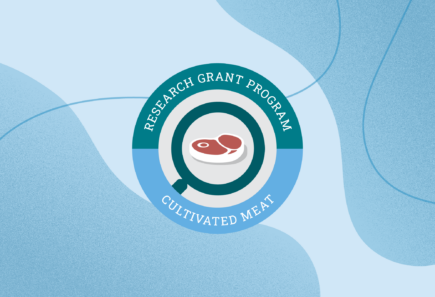
Conversion of fish fibroblasts to muscle cells
Years active: 2023Utilize bioinformatics to characterize cell populations in fish muscles, employing this data to directly convert fish fibroblasts into muscle cells.

Utilize bioinformatics to characterize cell populations in fish muscles, employing this data to directly convert fish fibroblasts into muscle cells.

This project will leverage multi-omic data to analyze several fish species in depth.
A lack of publicly-available cell lines from relevant species and cell types continues to be a challenge for the field of cultivated seafood. Addressing this challenge will require further investigation into the basic biology of aquatic species, development of optimized cell isolation procedures, and sharing of cell lines via existing and new repositories.

Learn about Dr. Kevan Main and Dr. Cathy Walsh’s work at Mote Marine Laboratory to develop cell lines and methodology for cultivated seafood.

Learn about Dr. Gareth Sullivan’s work to develop a “frozen farmyard” cell line repository for cultivated meat.
The cost and environmental impact of cultivated meat are driven by the cell culture media formulation and its conversion efficiency into meat. Metabolic modeling and engineering techniques can aid media formulation and ensure its optimal use. Targeted optimization will improve the cost-competitiveness and sustainability of cultivated meat production.
Efficient and cost-effective cultivated fish production will require precise optimization to encourage fast proliferation and highly efficient use of inputs while preventing premature differentiation. A variety of strategies can be employed to adjust various factors that contribute to these properties, including optimizing the starting cell line, improving the composition of the proliferation medium, and exploring the possibility of transdifferentiating easy-to-grow cell lines like fibroblasts into myogenic and adipogenic lineages.
Cultivated seafood will need to be supplemented with long-chain omega-3 polyunsaturated fatty acids to be nutritionally equivalent or superior to conventional seafood. However, how these compounds can best be incorporated has not been determined, and there are several potentially-viable strategies. Further research is needed to determine which strategies are most cost-effective and scalable and whether there are appreciable differences between methods in the quality of the final product.
Both the cultivated meat industry and interested members of the general public would benefit from the creation of makerspaces focused on cultivated meat. These would be publicly available spaces where community members can learn, experiment, and work collaboratively on projects related to cultivated meat. Here, they would have access to the physical equipment necessary to conduct projects as well as technical assistance to inform them. The aim of this project is to encourage more interaction between the public and the alternative protein industry, thus stimulating the exploration and development of more ideas. Makerspaces could also promote greater understanding of and openness to cultivated meat among future consumers of the product.
Cultivated meat research focuses primarily on muscle fibers and fat cells. However, other cell types serve functions that are often under appreciated in their relevance to cultivated meat. Co-culture methods with various support cells could solve a variety of challenges on the road to developing affordable, high-quality cultivated meat.